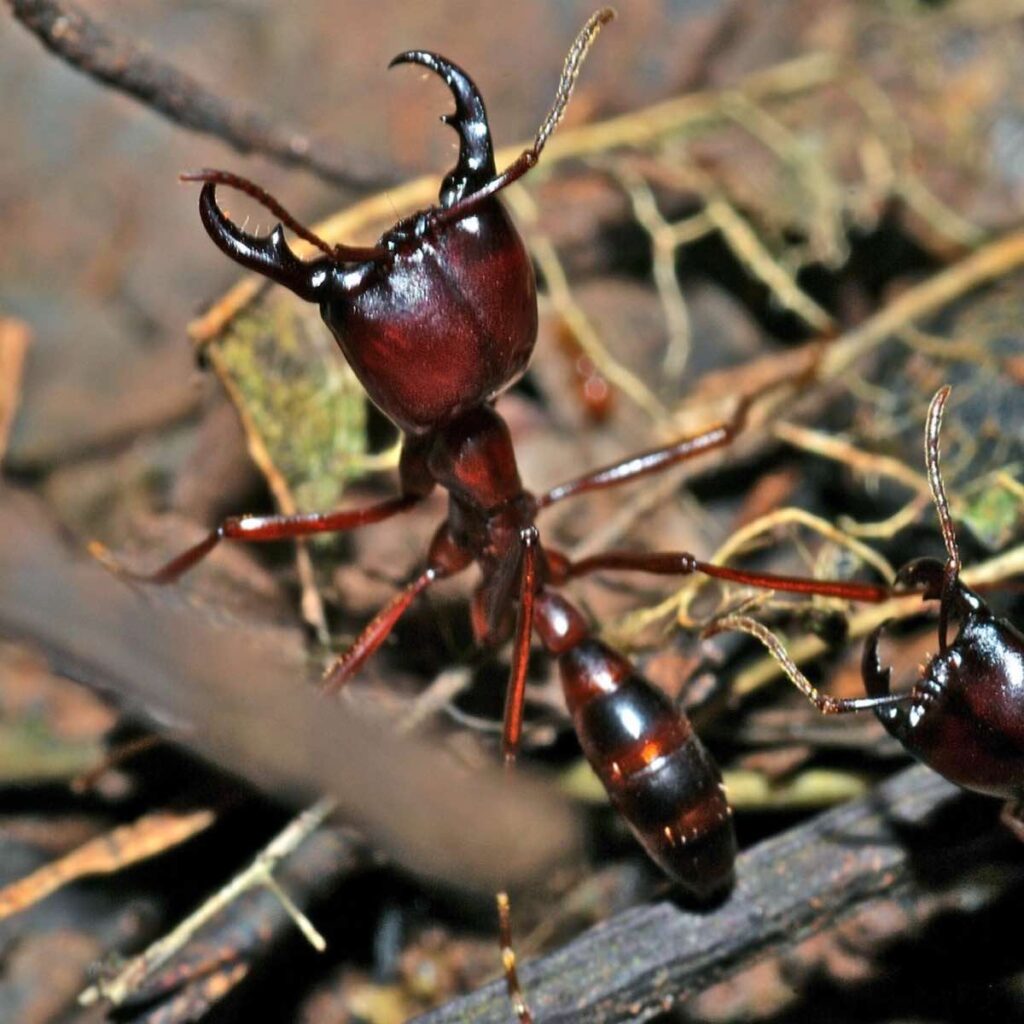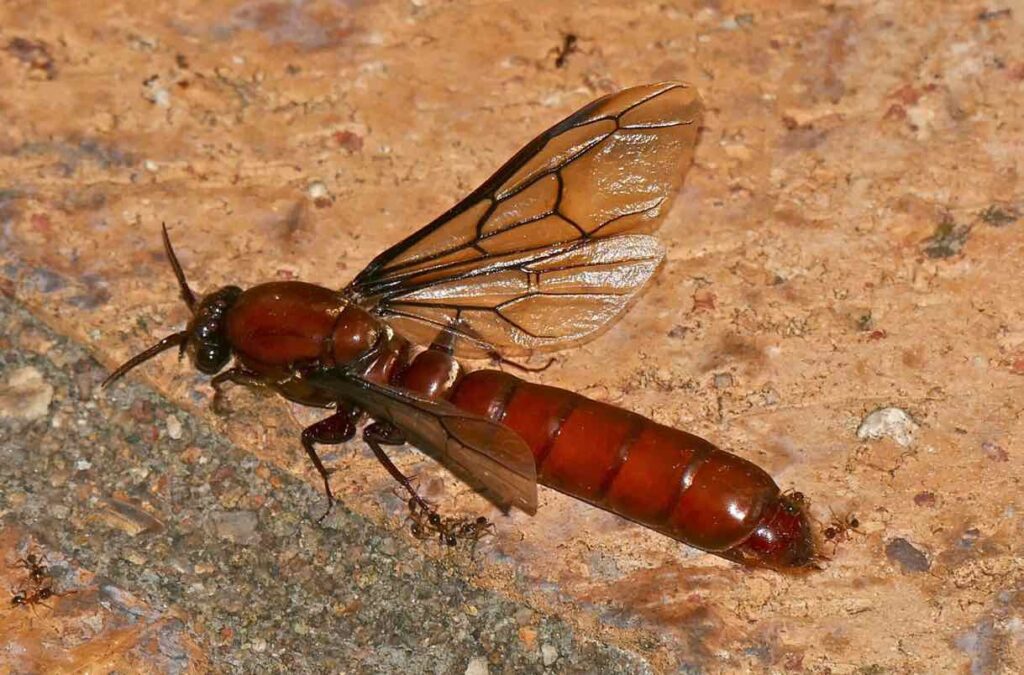Last Reviewed and Updated on February 21, 2023
Driver ants are one of the world’s largest, most powerful ants. Their powerful jaws can break up almost anything that crosses their path. Get to know these amazing insects a little better, from the basic information about them to some of the most interesting facts about driver ants.

About Driver Ants
Driver ants, scientifically known as Dorylus, are a genus of army ants that are commonly found in central and east Africa and tropical Asia. Other common names for driver ants are safari ants and siafu.
There are 61 described species of driver ants.
Driver ants live in large colonies which can contain over 20 million individuals. The colony is a highly organized society with a complex social structure.; it is made up of different castes, including workers, soldiers, and reproductive individuals, each with their own specialized roles and responsibilities.
The workers are the most numerous members of the colony, and they are responsible for tasks such as foraging for food, caring for the young, and maintaining the nest.
The soldiers are larger and more heavily armored than the workers, and their primary function is to protect the colony from threats.
The queen is much larger than the other ants in the colony and can lay over a million eggs per month. Reproductive males leave the colony soon after hatching and go in search of a queen to mate with in another colony when they reach sexual maturity.
Driver ants have a diverse diet that includes a wide range of insects and other invertebrates. They are known for their aggressive foraging behavior, which allows them to capture and consume a large number of prey species.
Interesting Facts About Driver Ants
Ready to learn some interesting facts about driver ants? Read on!

1. They often move their colony and don’t have permanent nests
Ants are a diverse group of insects, and the way they build their nests vary depending on the species. However, most ants build nests that are permanent, at least for a longer period of time (some for several years or decades).
Driver ants move their entire colony to a new location frequently, from a couple of days to three months. These ants are nomadic. They are in constant search of food, and once they deplete all resources at their location, they move on.
2. Driver ants also build bivouacs, structures built with their bodies
Apart from excavating subterranean nests, they can also make bivouacs. Bivouac is a nest constructed out of living ant workers. Why build a nest in the ground today if you will move to a new location tomorrow? Worker ants link their bodies, creating a massive structure that protects the queen and larvae.
Once it is time to move, the structure dissolves, and worker ants that were the building blocks of these bivouacs continue with their lives.
3. Driver ants can form marching columns of over 50 million individuals (feet)
Once they move, they move in style. While some species of driver ants move their colonies underground, many form long marching columns that can have over 50 million individual ants. This can be both an impressive and intimidating sight, as these columns can be dozens of meters long. They move at a pace of about 20 meters per hour.
The columns are arranged in a way where worker ants are at the center of the column, and soldier ants flank them, fiercely defending the colony against anything that might attack them.
Worker ants usually carry the driver ant queen to the new nest location.
4. They are considered great at pest control
When they are marching, they eat everything on their way. While this is slightly terrifying as “everything” can potentially include a human that, for some reason, wouldn’t be able to move away (which is extremely unlikely), they are considered beneficial to certain farming communities as they eat up the majority of crop pests on fields.
5. Driver ant queens are the largest known living ants
Driver ant queens are massive. The largest ones measure between 1.5 to 2.4 inches / 4 to 6.3 centimeters making them the largest known living ants.
6. Workers and soldiers are all sterile females
The workers and soldiers are sterile. This means they are not able to reproduce and do not have functional reproductive organs. Instead, their primary role is to support the colony
7. Only male driver ants have compound eyes
Workers, soldiers, and queens are blind and don’t have eyes. They communicate and navigate through pheromones.
Only the male driver ant has developed compound eyes (source; Anatomy and evolution of the head of Dorylus helvolus (Formicidae: Dorylinae) by B. E. Boudinot, O. T. D. Moosdorf, R. G. Beutel, A. Richter).
8. Males are sometimes called “sausage flies”

Male driver ants are sometimes called “sausage flies” due to their appearance. Males have elongated bloated abdomens and large wings, giving them a distinctive sausage-like shape
Fun fact: they were once believed to be a separate species.
9. Only males grow wings; queens do not grow wings
In most ant species, both the male and the queen ant are born with wings. Driver ants, well, all army ants, are an exception as only the male grows wings.
10. When a male encounters a colony, the ants tear off his wings and carry him to the queen
The male doesn’t get to keep his wings. When the colony spots the male, they tear off his wings and carry him back to the nest, where he will mate with a young virgin queen. Soon after mating, the male will die.
11. If the queen dies, the colony will merge with another colony
Driver ant colonies only have one queen. When she dies, the colony will attempt to merge with another colony of driver ants.
12. Soldier driver ants are used as emergency sutures in East Africa
Last but not least on our list of facts about driver ants is a medical one. Their pinch is so strong it can be used to stitch wounds; this practice was more common in the past, but it can still be used today as a last resource.
How? Hold the skin together, bring the ant next to it, and wait for it to bite down. Remove the body, and the head will stay in place for days.
